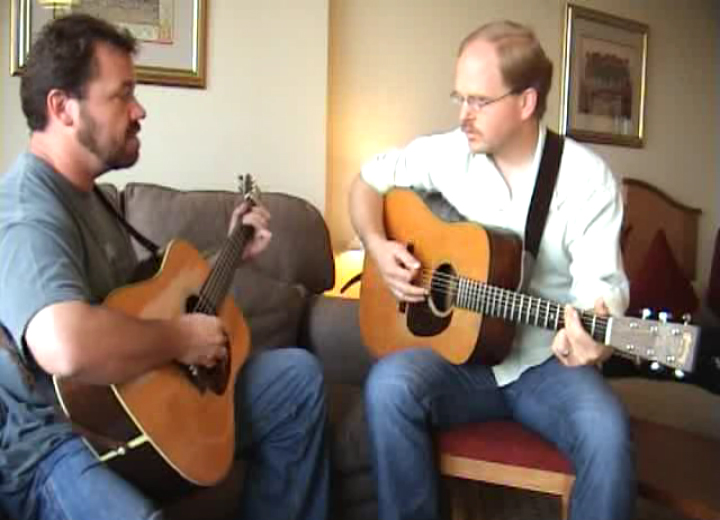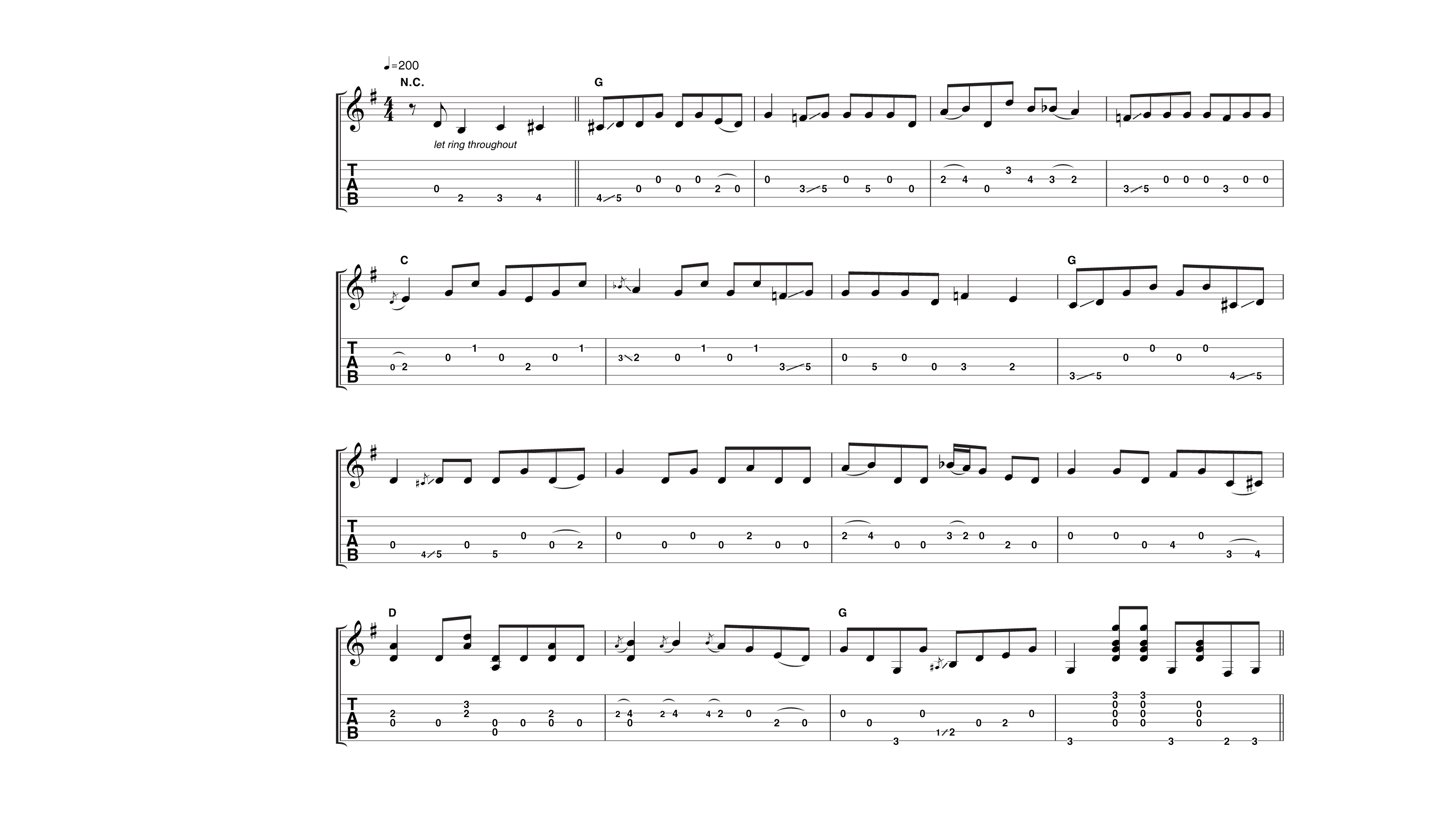Union Station on bluegrass soloing
Check out this video lesson with free tab



According to Dan Tyminski , Union Station's front man, this example of bluegrass picking is "as basic as you can get". However, check out the video and you'll see that what Tyminski plays does sound like a simple melody, embellished with a few drones, but when you look at our free tab you'll find there's quite a lot of subtle techniques used to achieve the sound he creates.
Most of the bars contain at least seven of the possible eight quavers (8th notes), which immediately gives the solo momentum. The picking uses strictly alternating strokes, so during the slides, pull-offs and hammer-ons, the picking hand needs to continue moving as if both quavers were played.
In bar 1 (after the pick up bar) you should play beat one with a downstroke and 'mime' the following upstroke; ALL the beats start with a downstroke. This gets trickier later when chord fragments are used as you need to skip between non-adjacent strings without messing up the timing.
The second solo is taken by Union Station's guitar/banjo player Ron Block. As before, pick strokes are strictly alternate, so notes that fall ON the main beats are downstrokes, all of the off-beats are upstrokes. For example, the lead-in bar of our Tab begins on the 'and' of beat 3, so this will be an upstroke.
The solo features some surprising twists and turns, venturing into blues territory and even including some jazz-style chromatic passing tones.
One aspect of this solo that (despite the scale choices) instantly says 'bluegrass' is the frequent use of open strings. Repeating the same note but using open and fretted strings creates a banjo-like drone, but note also the imaginative use of open strings within scale runs (for further study of this technique, check out Chet Atkins and the amazing Jerry Reed).
Want all the hottest music and gear news, reviews, deals, features and more, direct to your inbox? Sign up here.